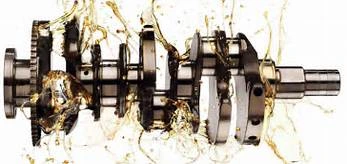Categories of Industrial Oils :
Hydraulics AWS – Premium Mineral Anti-Wear Hydraulic Fluid.
Slide Way Oil –
Compressor Oils – FSSE Series: Synthetic Ester Refrigerator and Air-Conditioning Compressor Oils.
. – R Series: Paraffinic Piston, Rotary/ Reciprocating Compressor Oils.
. – SC Series: Paraffinic Screw Type Compressor Oils.
Gear Oils – Premium Heavy Duty EP Industrial Gear Oil.
. – EP Synthetic Industrial Gear & Bearing Oil.
Heat Transfer Oils – Advanced Premium HT Heat Transfer Oil.
Chain Oils – High Temperature Highly Refined Paraffinic Chain Lubricant/ High Temperature Polymer Synthetic Chain Lubricant
Punching Oil / Stamping Oils – Punching Oil for thin metal sheet, Drawing Oil for extreme pressure deep/heavy duty process. (Chlorine-Free)
Anti-Rust Oils & Coating – Solvent base / Barium free water displacing and Alkali resistant rust preventive
Cleaning Fluids – Biodegradable system cleaning fluid and degreaser.
Categories of Metal Working Fluids :
Water Soluble Milky Coolants – Enhanced Biocides EP, Water soluble cutting coolant, Non Staining on sensitive aluminium.
Synthetic Based Coolant – Advanced Biosides Universal synthetic water soluble blended Cutting or Grinding fluid.
Tapping Fluids – Extreme heavy duty tapping fluid for hard material
Spark Erosion Fluids (EDM Oils) – Synthetic spark erosion fluid / electrical discharge machining fluids.
Industrial Lubricants, Oils and Fluids
Its produced from Synthetic and Petroleum fluids. Petroleum-based oils are economical due to the abundance of petroleum availability. Synthetic oils are more expensive, but the benefit from improved performance outweigh the cost in some applications.
The dominant factor among liquid lubricants’ characteristics is their viscosity. There are two main types which are dynamic and absolute viscosity. The typical units of measurement are
lb-sec/ft2. Viscosity is defined as the velocity gradient between moving and stationary parts of a fluid. The kinematic viscosity is the dynamic viscosity divided by the lubricant density. Kinematic viscosity can be expressed as Saybolt Seconds Universal (SSU). The SSU is a number assigned to a lubricant after it runs under Newtonian flow conditions through a capillary-tube viscometer. The centipoise is the standard unit of dynamic velocity used in the cgs system. However, viscosity can be affected by shear, temperature, and high pressure.
The lubricant’s change in viscosity as temperature changes can be measured as a viscosity index (VI) with a number between 0 and 100 assigned. The higher the number, the less the change in viscosity as temperature changes. The pour point is the temperature at which the lubricant (or oil) can flow. This is a critical consideration in gravity lubricators or cold starting engines. There are pour point depressants that can lower the pour point. On the other hand, the temperature at which the formulation’s wax starts to separate visibly is the cloud point. This is mostly above the solidification temperature and is critical as wax can clog filters.
The other attributes of lubricants include:
- Flashpoints
- Fire points
- Capability to withstand high pressure in extreme pressure situations such as hypoid gearing
- Susceptibility to foam in high-speed rotating applications like crankcases and turbines
Extended pressure (EP) lubricants have been specially formulated to inhibit the metal-to-metal contact wear of highly loaded gears. However, this high pressure affects the viscosity as it increases when the pressure gets extreme. Thus, highly loaded machines are primarily designed with a recommendation to use relatively low viscosity fluids, which may not necessarily be suitable for lower pressure applications.
Synthetic oils are mostly used to increase the VI or thermal stability. This typically happens at the expense of another characteristic, e.g., pour point. Synthetic lubricants are much more expensive than mineral-based lubricants. They are thus used in industrial settings only, in which case the performance gains outweigh the extra expense. Examples of such industrial environments include instruments and heat transfer systems.
A variety of fluids can be used to make synthetics, and these can be phosphate esters for hydraulic fluids that are fire-resistant, polyglycol for brake fluid, the silicone used in plastic and rubber, etc. Oils such as that used in engines can have other functions like cooling, corrosion prevention, sealing, etc., besides lubrication. Manufacturers hybridize these products with various additives, including VI improvers, detergents, pour point depressors, EP enhancers, etc., to serve many purposes.

